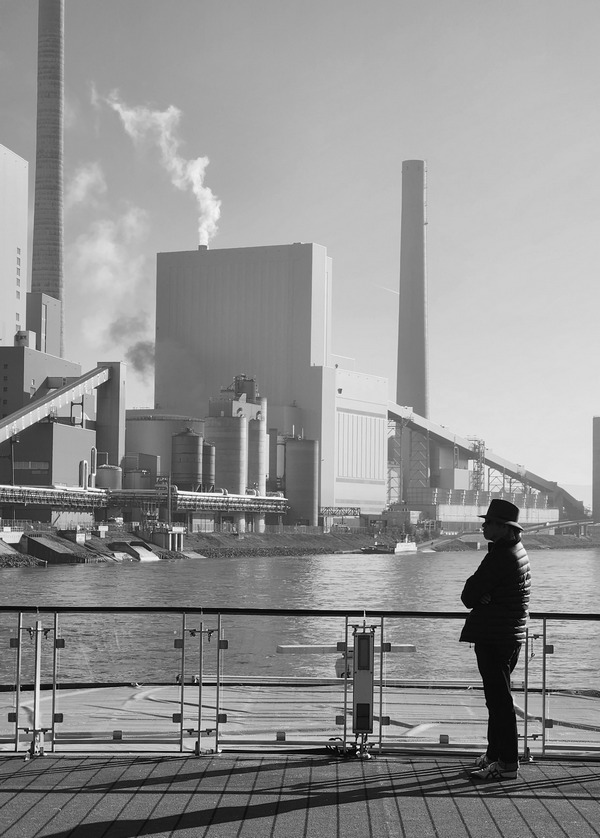
-

Travelogue
Rhine River Cruise: Amsterdam to Basel
by
Ernesto "Boy" Pantig
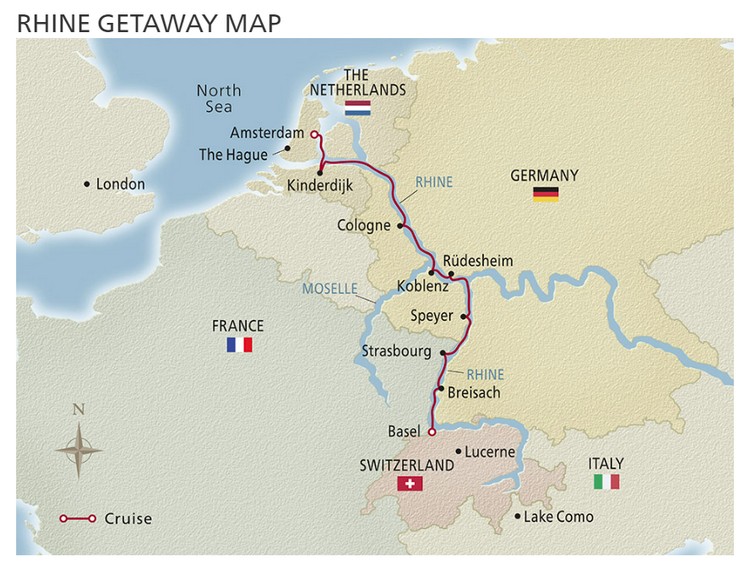
A drizzly Sunday afternoon greeted us as we arrived in Amsterdam on October 26,
2022. Brothers and Sisters Vale, Iou, Lem & Laureen have already been
criss-crossing Europe for over a week and likely looking for some respite.
Brother and sister Willie & Aida were flying-in from Indiana to join us. Agnes’
sister Zeny and her beau Howard were also joining us. After welcome drinks
aboard, some of us decided to walk around the Dam District. The weather was
sketchy but would not dampen our the enthusiasm. The air was thick with
excitement.
We were on the verge of what was to be a memorable 750 mile
riverboat cruise down the Rhine River through the countries of The Netherlands,
Germany, France & Switzerland. The accommodation and destinations will be grand
but to see and enjoy it all with beloved Betan brothers, sisters, family &
friends is what makes this trip extra special.
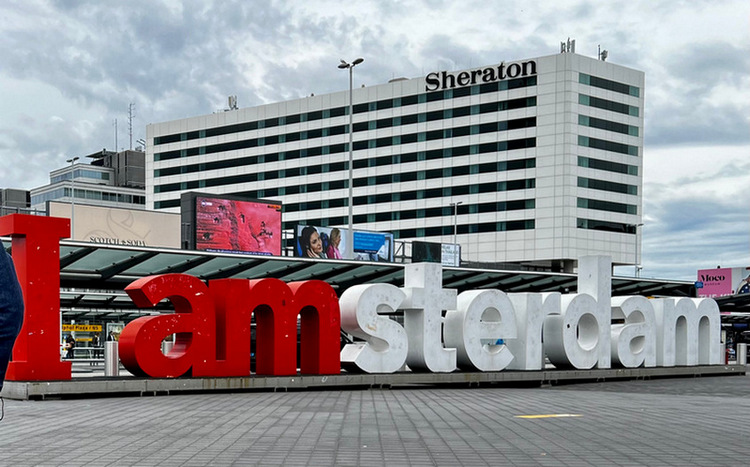
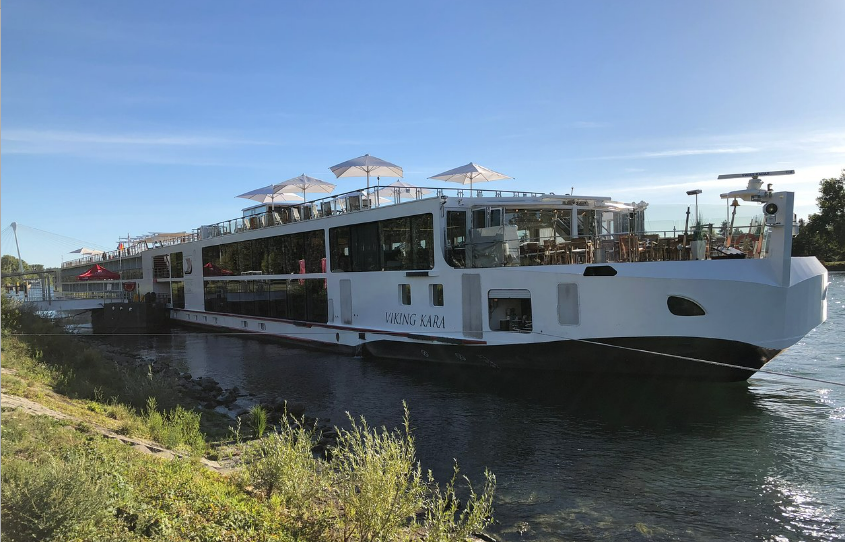
Our Ship - VIKING KARA
The Cast of Characters and the Adventure They Face
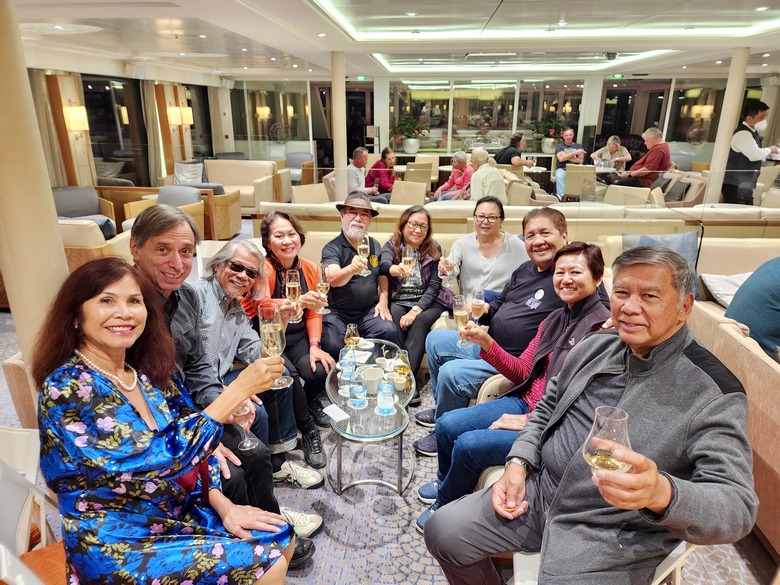
In the
Bar & Lounge (frequently visited), clockwise: Zeny, Howard, Brod Boy P (73C),
Sis Agnes,
Brod Lem (75A), Sis Laureen, Sis Aida, Brod Vale (73B), Sis Iou, Brod Willie R (67B).
This is a well-rounded group of food and drink enthusiasts. Say “Veuve Cliquout” & “Taitinger” champagnes, “Glenlivet” aged single-malt whiskey, “Blue Label” scotch, you name it - all to mix with the fine food served daily. We all had the Silver Spirits Package which is a must for any true imbibe and fun-loving Betan (and gang). The bartenders and servers (some Filipino) were eager to please and so the drinks flowed.
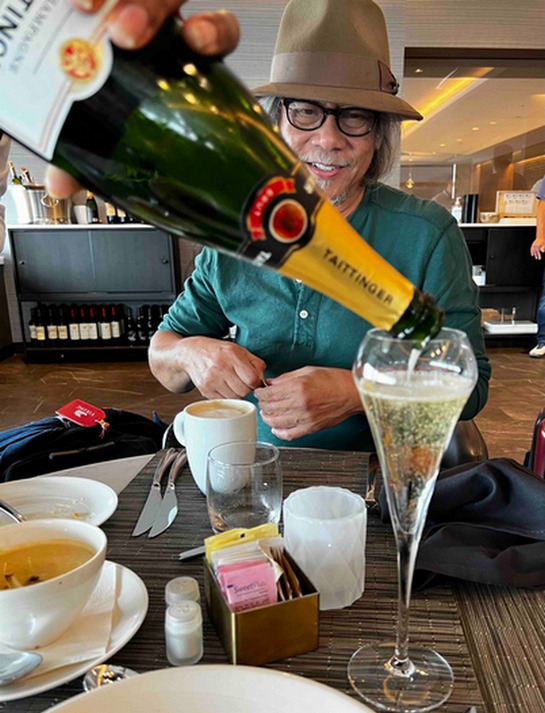
Upon arrival on the Viking
Kara, Brod Boy P (73C) carefully monitors the welcome pour.
What followed was a daily dose of wonder & amazement, a few bus rides, lots of walking & photographing, afternoon cocktails in the lounge or out on the sun deck, and long, fancy, local-themed dinners that let you explore food & wine from whichever area the boat might be in at the time. The Chardonnays were refreshing, the Rieslings big favorites. The menus were extensive and the service superb. And to top it all, Hermie, the head chef, was Filipino and delighted us all with his creations both on & off-menu.
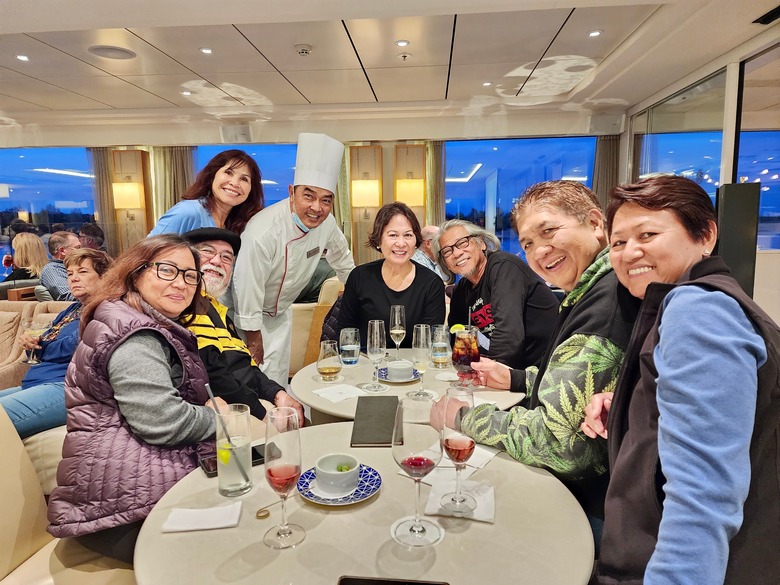
Our Filipino chef Hermie
Daily, Hermie would make announcements of upcoming culinary offerings, which all made us eagerly await each meal.
The thing about riverboats, they’re much smaller than sea-going cruise
ships. At about 170 passengers, the river cruise experience was much more
immediate and personalized. The multi-national crew, always attentive, had
members from Portugal, Estonia, Montenegro, Croatia, Czech Republic and
Indonesia just to name a few. And of course there’s the massive Filipino
contingent which always gives you that homey feeling.
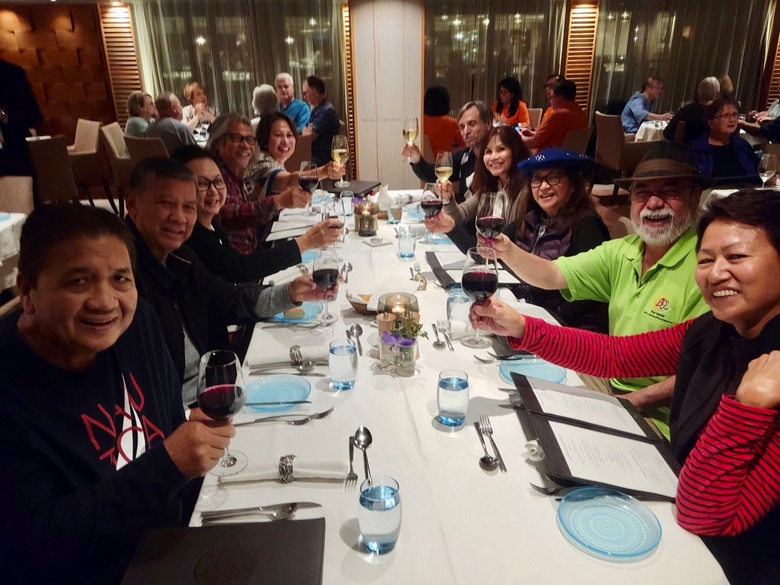
Our very first dinner
upon embarking.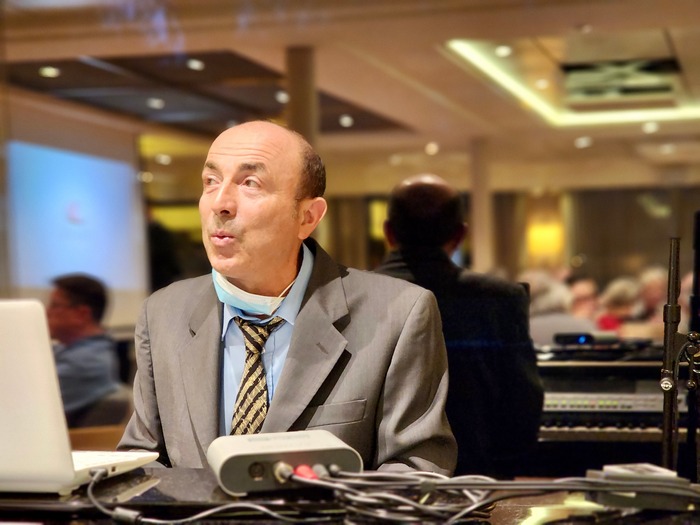
Roberto, our Italian Jazz/Pop pianist & singer provided nightly entertainment.
There was not one song the group
requested that came unplayed - from Patsy Cline to Steely Dan, The Beatles to The Boss, he played it all.

Lunch at our favorite
table in the on-board restaurant.
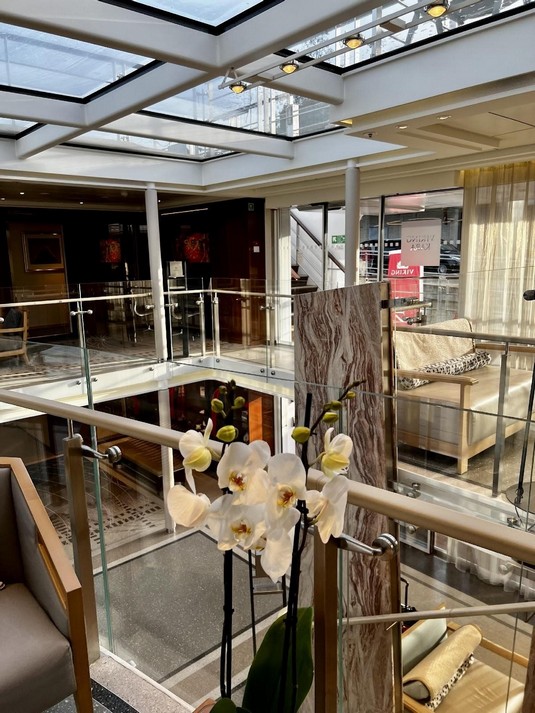
The Viking Kara’s lobby -
The Kara was our home for one fantastic week.
Day 1 - Kinderdijk, The Netherlands
Our first stop was Kinderdijk, home to the majestic windmills The Netherlands is famous for. The small town is a UNESCO World Heritage Site and most of the postcard pictures you’ve seen of these iconic windmills were likely photos of the ones found here.
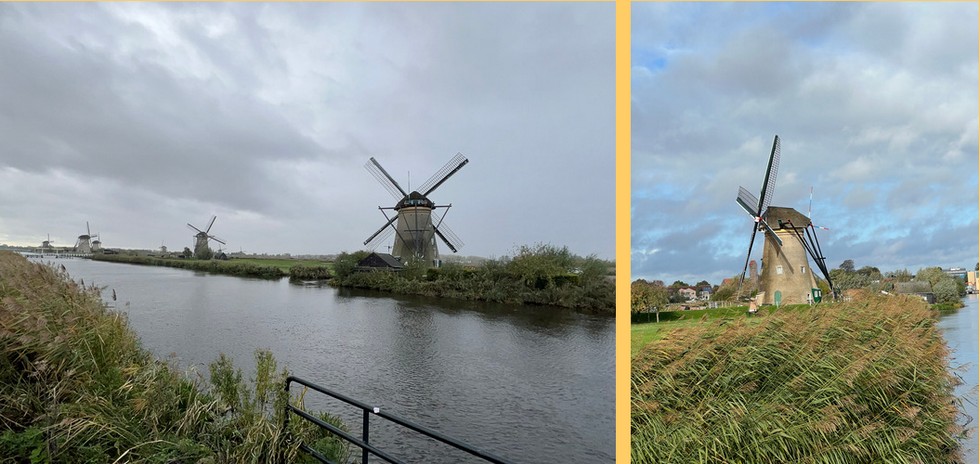
A series of windmills along the polders of low-lying land reclaimed from the sea.
The windmills, built in the 18th Century, were used to pump water out of
low-lying land to control flooding. Fact is a third of The Netherlands lay below
sea level. The windmills today are still functional but most of the country’s
present day flood controls now use modern equipment. Another tidbit is that the
windmills are actually home to families that operate and care for each of the
windmills. There exists a qualification process to be allowed to maintain (and
live-in for free) in one of the windmills.
It was rainy that day, the
last bit of bad weather we were to see for the remainder of the cruise.
Day 2 - Cologne, Germany

Cologne’s twin-spired,
14th-century cathedral.
It was an overcast day but no rain.
The Gothic structure was once, for a short time, the tallest building in the
world. It was no longer the tallest at the time, but during World War II, its
twin-spires were still tall enough that Allied aerial bombing crews found it
useful to spare the structure during bombing runs and used it instead as an easy
navigational aid.
An amazing aside, 70-year old Howard climbed the 509
steps to the top, all before lunch!

Facade of Peters Brauhaus in Cologne city center
We found an authentic German brauhaus called Peters established in 1849. We
sampled their “Kolsch”, a light, crisp beer by law can only be produced in
Cologne. The beer is served in tiny, ice-cold glasses served from a circular
tray called a “crown”. And we ordered German delicacies like fried pork knuckles
(crispy pata, really) and other items.
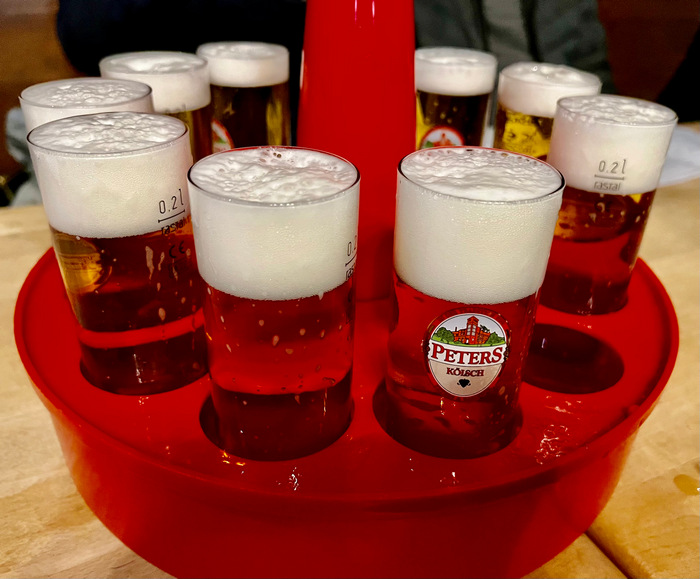
A crown filled with glasses of ice-cold Kolsch

What’s left of a rich plate of fried pork knuckles
By the way, the waiters in these brauhauses, called “kobes”, can be described as at times rude or taciturn but society has gotten used to them. The saying is they’re “allowed to have a bad day on any day”. Our waiter wouldn’t be the extreme example but he wasn’t chummy. No harm - no foul… the beer was ice-cold and the food good. We’re copacetic.

The sun slowly sets and we
started to head back across the river as
Cologne Cathedral’s twin spires silhouette against the amber sky.
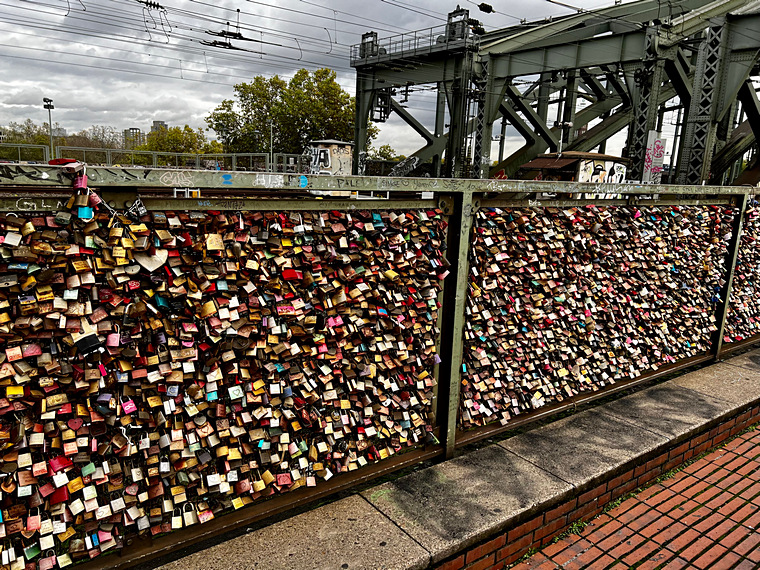
Padlocks (with keys thrown
in the water) are strapped all along the railings of the bridge.
As we strolled across the Hohenzollernbrucke Bridge (a mouthful… had to look
that one up) to get back to the ship, we looked at the thousands upon thousands
of padlocks strapped to the railing grates. Couples stroll across the bridge
with their padlocks, try to find a rare open spot to strap it to, profess
everlasting love for each other and throw the lock’s keys down the river. Howard
and I wondered how many thousand locks are actually on that bridge. However we
couldn’t agree on a calculation methodology so we just agreed that it’s probably
less than a million locks.
That evening, in keeping with the local theme,
we were treated to some classical music by a guitar & violin duet from Cologne’s
Academy of Music.
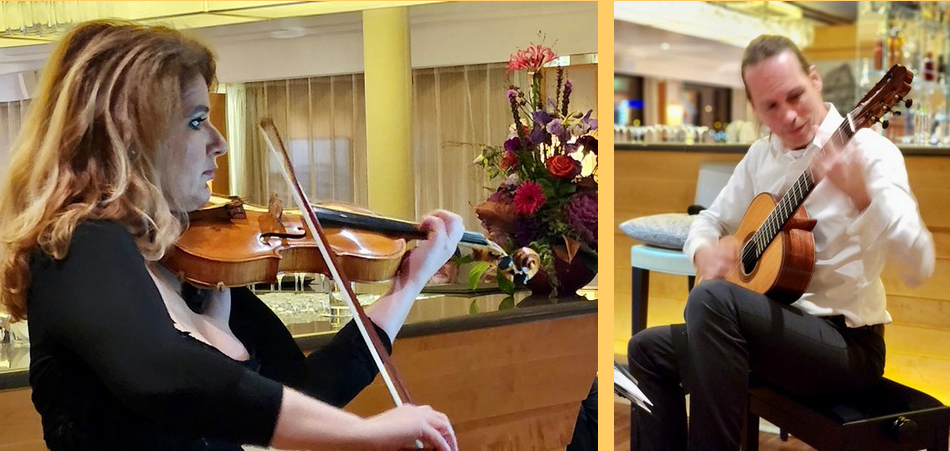
Cologne-based guitar and violin duo playing classical music for the guests & crew.
Day 3 - Koblenz & Rudesheim
We sailed overnight to the small town of Braubach. From there we rode a bus
to historic Koblenz. Founded 2,000 years ago, its location at the confluence of
the Rhine and Moselle rivers made the town an important trading outpost.

A view of the
Marksburg Castle as we left Braubach by bus on the way to Koblenz.
Zeny & Howard hiked up to the site.
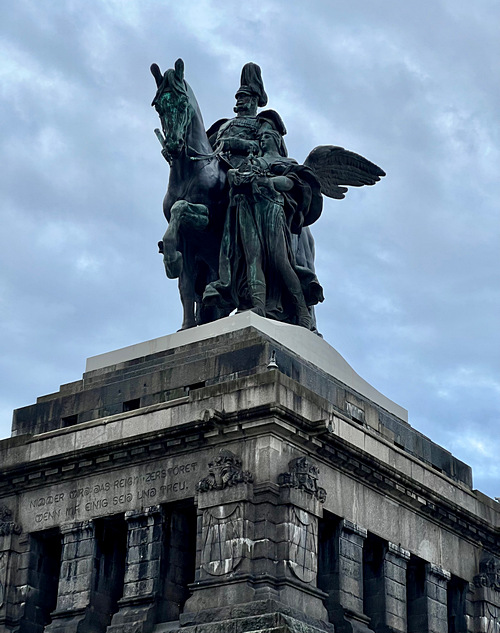
A giant statue of Prince
William I (ca. 1897) rules the Koblenz river scene.

Near the Koblenz Rathaus
(or City Hall) an iconic fountain sculpture of a little
boy spitting water on passersby at erratic intervals causing some funny reactions.
We’re now sailing through The Middle Rhine, a stunningly picturesque stretch of forests, small towns, vineyards and castles. It was a cool, sun-drenched day as we all crowded the viewing deck to watch the postcard-like scenery.
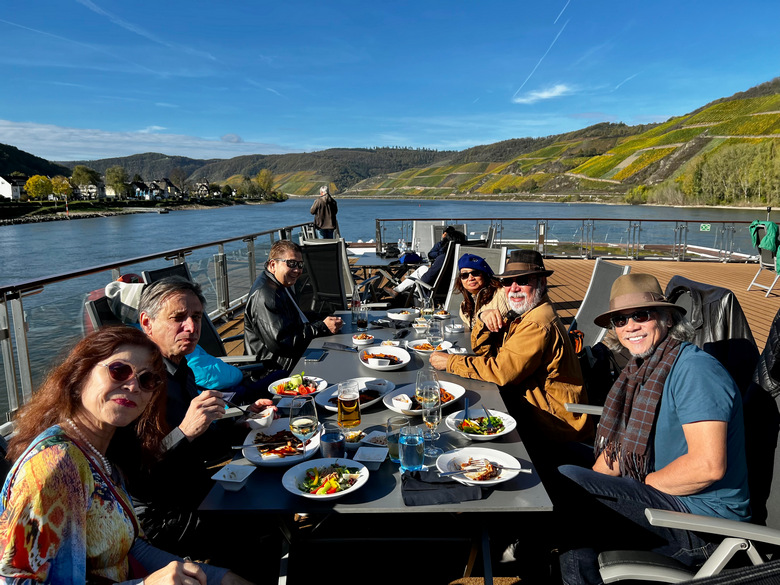

Enjoying what was the most beautiful day of the trip. We basked in the sun, sipped wine,
enjoyed hors d'oeuvre and soaked in the visual feast that is The Middle Rhine.
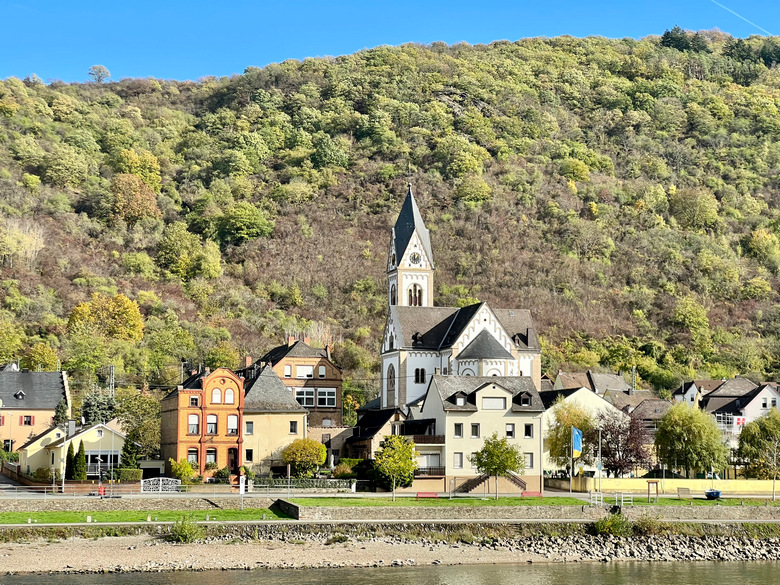
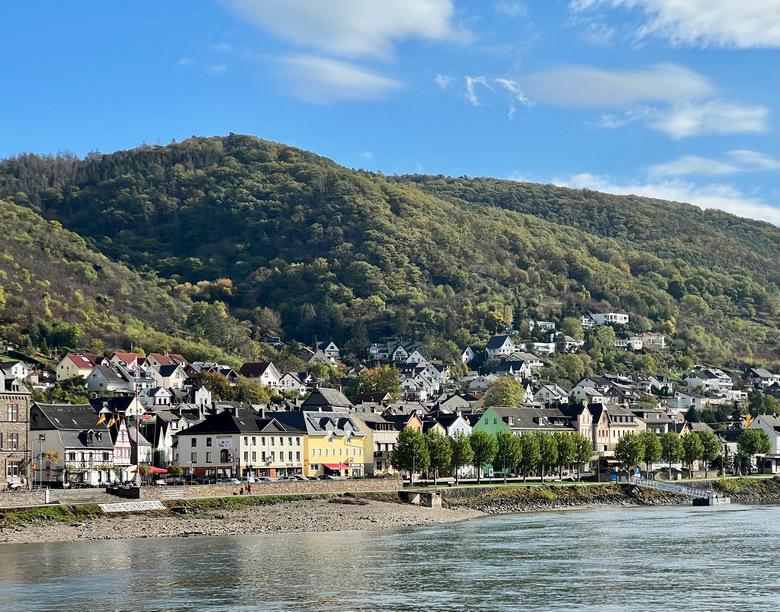
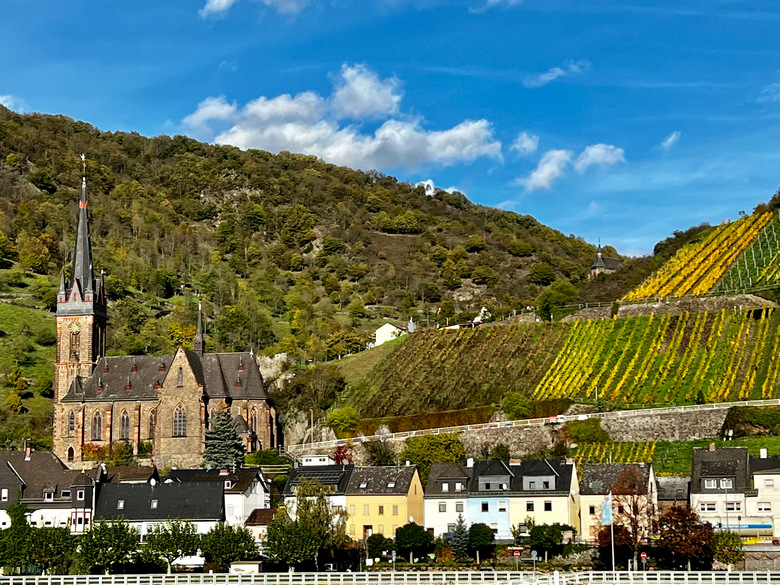
Scenic little towns along
The Middle Rhine

Vineyards dot the hills along the banks of The Middle Rhine. Some of the hills are so steep
that vineyard workers have to rappel down the slopes to do their work.
Some of the vineyards date back to the Roman era. In old times, most water
sources were deemed unsafe so the Romans used wine to dilute and purify the
water. As conquerors there were reasons why the locals might wish them harm.
Along their centuries-long conquests, the Romans brought their wine-making
expertise wherever they went and that included the “Mittelrhein” region. So
thank you insolent ancient Romans for the fine wines we all drink today.
We sailed on to Rudesheim, a smaller, medieval-flavored village
perched on the side of a hill at the center of the area’s wine-making region.
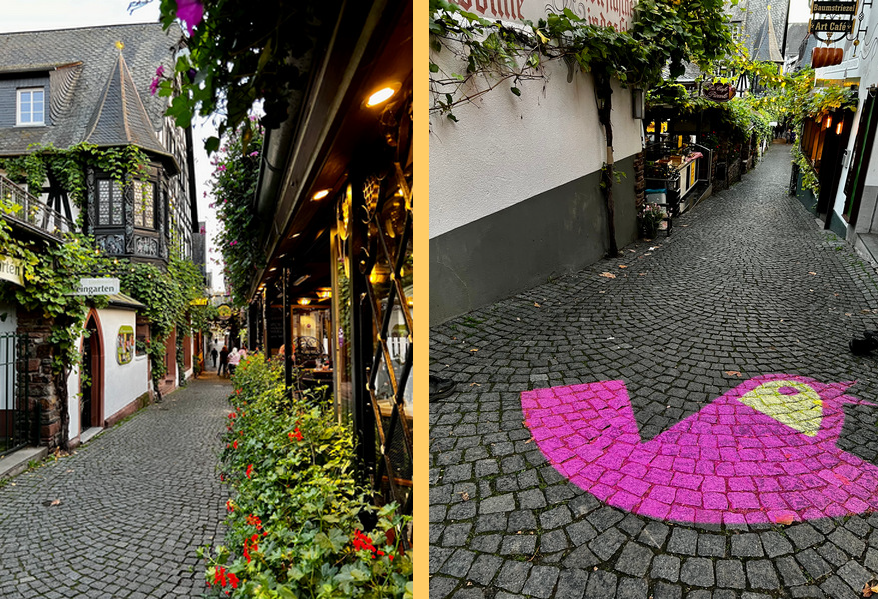
Rudesheim’s steep cobblestone streets reveal its medieval roots.
Unfortunately, we arrived in Rudesheim a little late in the afternoon so
we missed the cable car ride up the mountain to the Niederwald Monument which
would have afforded us panoramic views of the Middle Rhine.
We walked the
cobblestone streets lined with shops, restaurants & taverns, half-timbered homes
and narrow alleyways. Brod Willie looked for a Chinese restaurant but couldn’t
find one. We sat down for drinks and soon made our way back to the boat for
another fantastic dinner. It wasn’t Chinese.
Day 4 - Speyer, Germany
Our next stop was the small town of Speyer on the The Rhine’s west bank. The
city’s Romanesque Cathedral is the burial place for eight (8) Holy Roman
Emperors.
The town is an important footnote in the Reformation Movement.
Though not its birthplace, the term “Protestantism” was coined during the Diet
of Speyer in 1529 wherein important religious and political leaders of the time
signed a “Letter of Protestation” against the Roman Catholic Church’s
persecution of Martin Luther, the Movement’s founder.
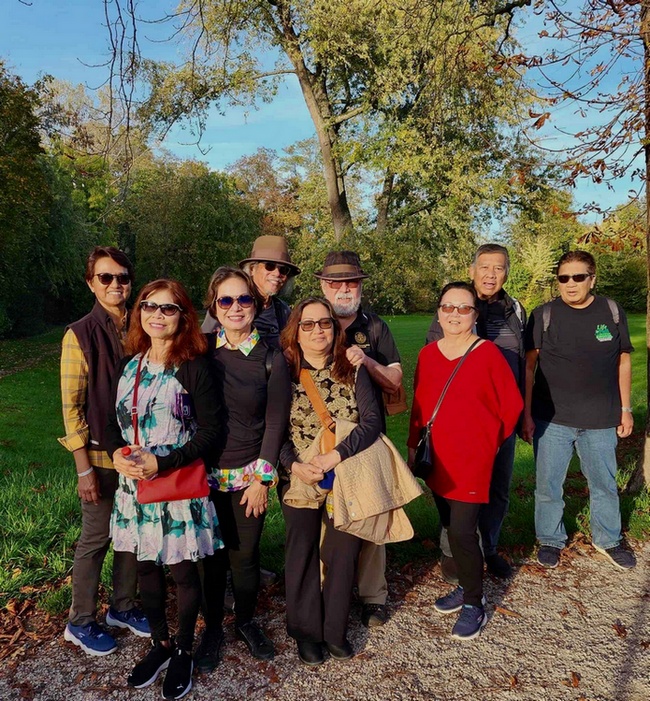
The whole gang (minus
Howard who’s behind the lens) on the way to the Speyer town center.
Speyer was also an important part of the Way of Saint James as he (and
numerous to follow) pilgrimage their way southwest to Santiago De Compostela.
Several years ago the route was finally sign-posted as part of the famous trail.
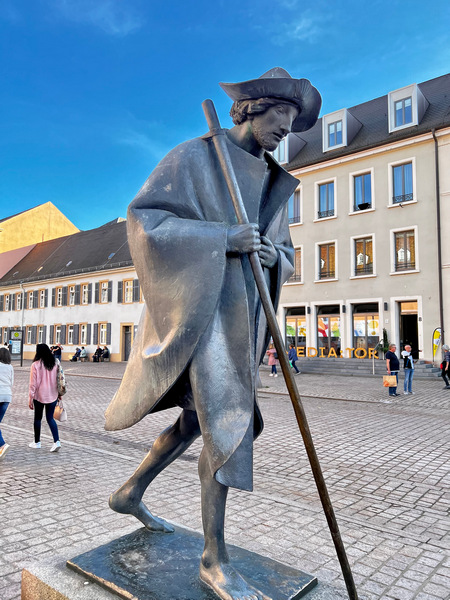
Statue of a figurative pilgrim or one might even see in it a figure of
Saint James himself. (Note: Modern-day pilgrims now wear shoes.)
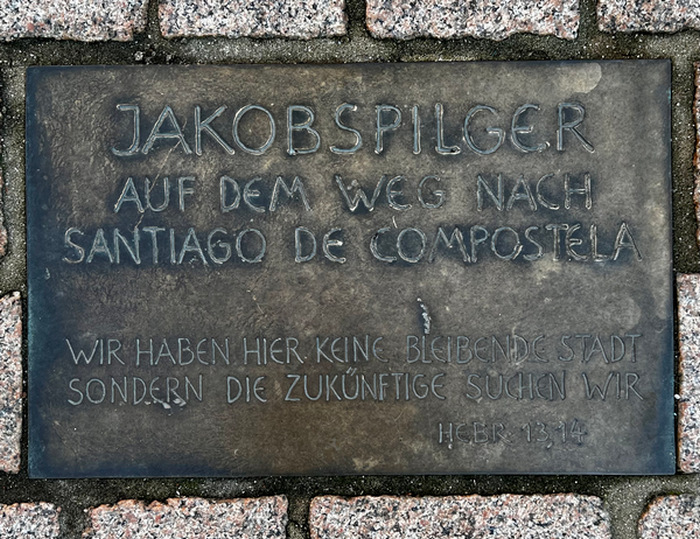
The sign post marking the town as part of the Way of Saint James.

Street scene in Speyer’s town square
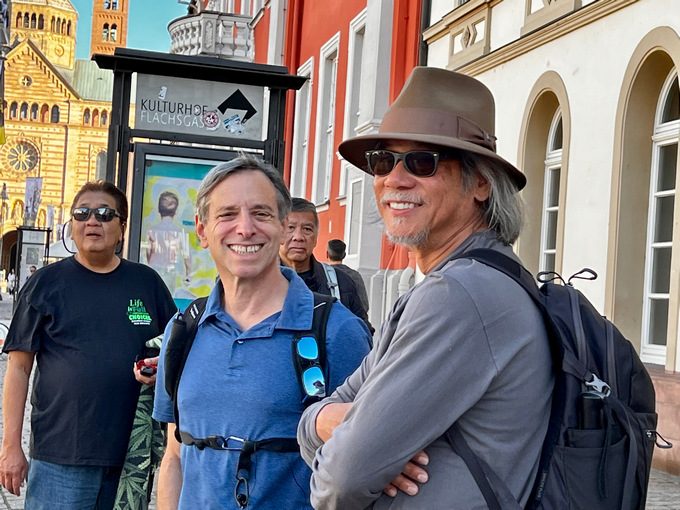
L-R: Brod Vale, Howard, Brod Willie, Brod Boy.
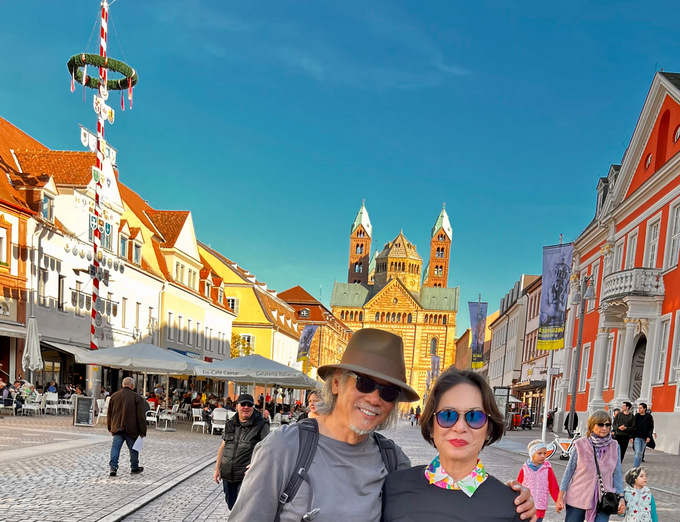
Brod Boy and Sis Agnes
with the Romanesque Imperial Cathedral in the background.
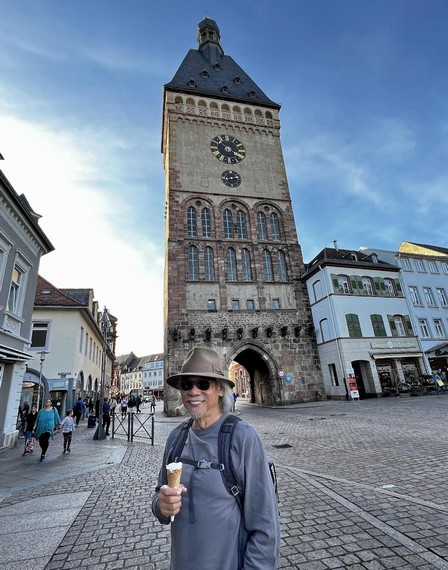
Brod Boy enjoying a gelato
- where’s Sis Aida? She’s the gelato-fiend.
Day 5 - Strasbourg, France
Strasbourg, located on the border between France and Germany, is home to the
European Parliament and other EU offices. It is the cultural center of the
Alsace region, and a part of France where people can just as easily identify as
German. Besides the mere proximity, the City has changed nationalities four
times in the last century and a half. But… today it’s French.
Its
well-preserved Old Town is surrounded by a small river tributary of The Rhine
with four canals flowing through its heart.
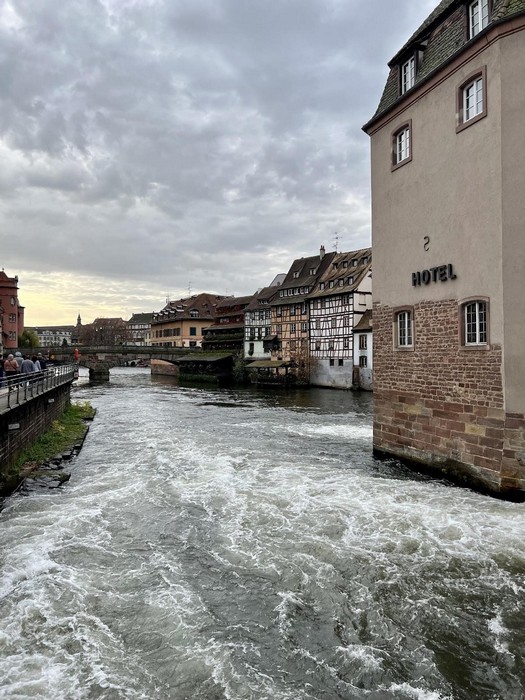


Half-timbered structures along one of Strasbourg’s picturesque canals.
The city once had a thriving leather tanning industry. The buildings across the
canal in the 3rd photo used to be leather tanneries. Notice the top floor of one
of the buildings - the one without exterior walls thus exposing the insides.
That part of the house would allow air to blow through and circulate for drying
and curing the leather.
One tidbit about Strasbourg’s old “Tanner’s
District”: In the old times when Strasbourg was a free city, sick French
soldiers suffering venereal disease they’ve contracted in Italy, were sent and
isolated in a hospital there. The local people called the affliction the “French
disease” and started derisively calling the area “La Petit France”.

The Strasbourg Cathedral - One of the world’s most acclaimed examples of Gothic architecture.
It was the tallest building in the world until 1874.

Inside the Strasbourg Cathedral is the “Astronomical Clock” with figures that animate at
different times of the day. It’s a massive, completely accurate contraption that tells time,
date, day, equinoxes, etc. Brilliant! Someone had a lot of time in their hands.
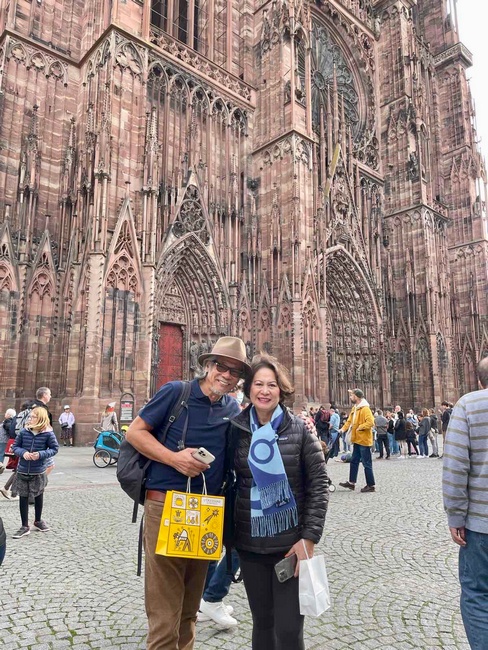
Brod Boy & Sis Agnes with the Strasbourg Cathedral’s
pink sandstone facade in the background
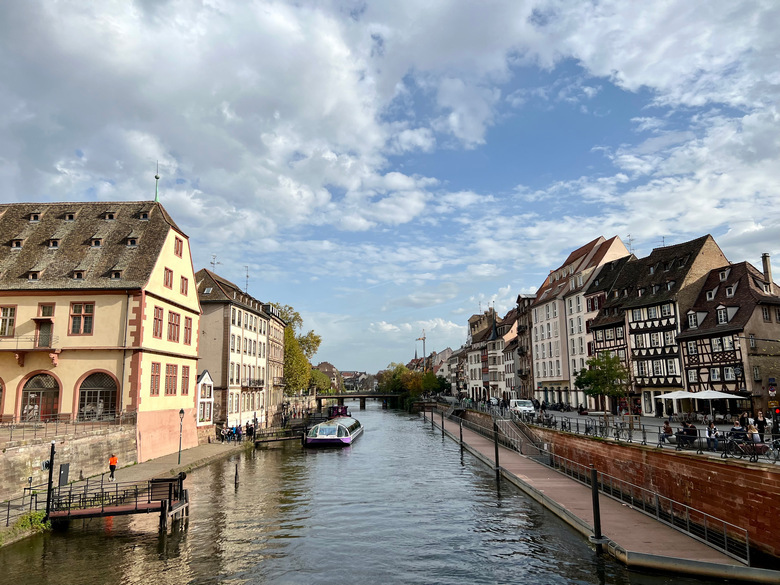
Another scene showing
boarding docks for boat tours along Strasbourg’s famed canals.

Brod Lem looking surprised
that Sis Laureen was taking
photos of some really tiny people.

L-R: Sis Iou, Brod Lem, Brod Vale, Sis Aida, Sis Laureen (far back) and Brod Willie in downtown Strasbourg.
At this point Sis Aida was likely plotting to raid a nearby gelato establishment.
Brod Willie in the meantime was thinking “where’s there a Chinese restaurant?”.
Something that interested everyone was the ship’s passing through the many locks that dot the river’s path, some 30 locks from Amsterdam to Basel. Most passes happen deep into the night so we have yet to actually witness one. But this night, the ship was rushing to meet an early appointment at one of the locks. Yes, you have to make an appointment.

The Viking Kara passing
through one of the many locks along The Rhine.
Day 6 - Breisach and The Black Forest, Germany
The town of
Breisach was to be our gateway for an afternoon excursion into The Black Forest.
In the meantime we had the morning free to explore the town and its
surroundings.
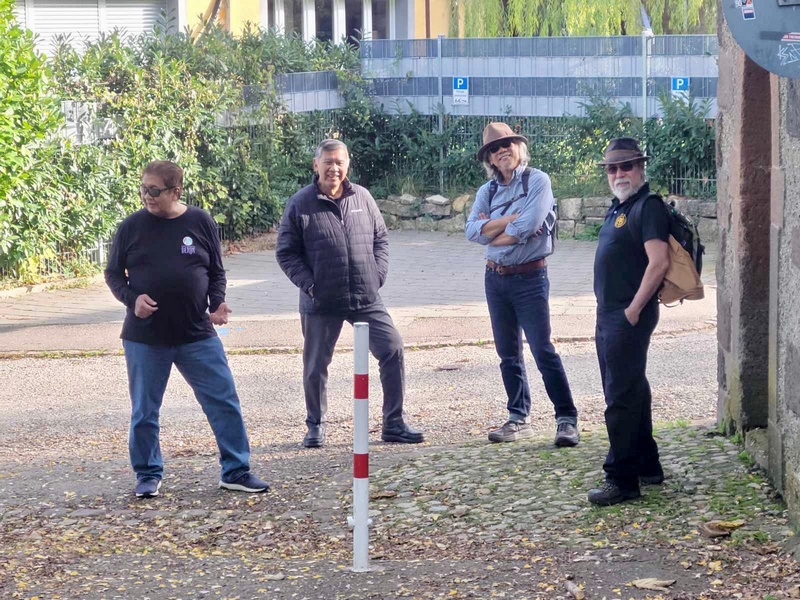
TABETS ASTIGS in Deutschland
Brod Vale (73B), Brod Willie R (67B), Brod Boy P (73C) and Brod Lem (75A),
all somewhere
in Breisach, all thinking “this would
make a great album cover”!
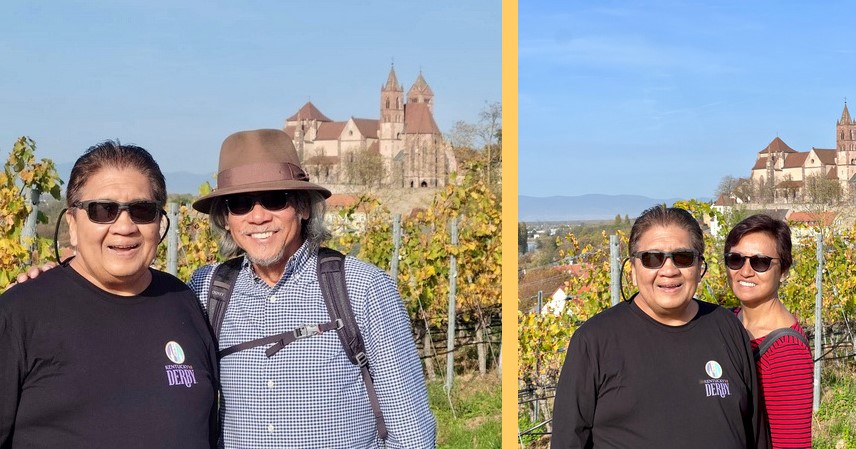
Brod Vale and Brod Boy;
Brod Vale & Sis Iou walking the vineyards outside Breisach.
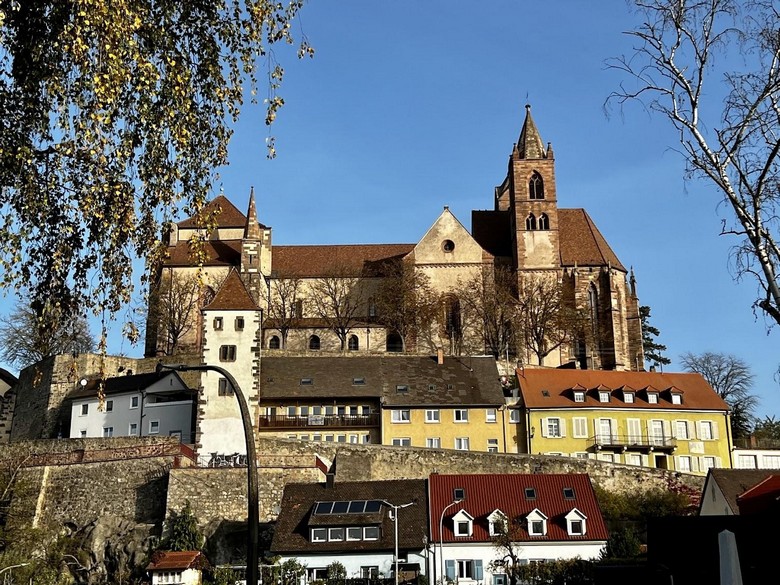
Saint Stephens Church in Breisach built in the 12th Century in the
Romanesque-Gothic style.
Remember when Brod Willie was craving Chinese
food? Well apparently that search was still on and he found it (of all places)
in Breisach, Germany. We have no pictures of this eventuality but Brod Vale,
Brod Boy and Sis Agnes ate there with him. Brod Willie had to rouse the waiter
and the cook but we got served lunch. Alright… Chinese cooked by an Albanian and
served by a Turk - yeah!!!
But honestly, we ate all the food, had lots of
fun with it and to this day still joke with Brod Willie about his penchant for
Chinese, and equally with Sis Aida’s weakness for genuine gelato.


Despite missing out on photos at our Chinese lunch, I found some stock photos of the
China Restaurant on the internet. As was the case when we went in, there was no one inside.
So off to The Black Forest we went. It was an hour bus ride along grassy hills and verdant valleys. Cows seem to like it there. They’re massive bovines with silky, shiny coats wearing iconic and equally huge cowbells.
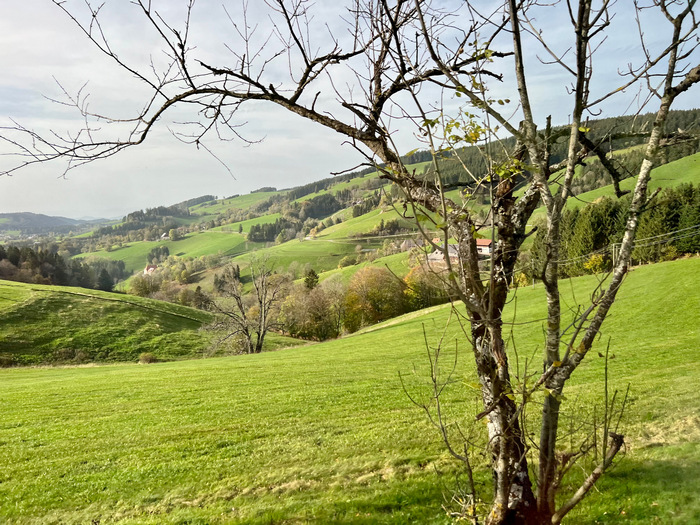
En route by bus to the Black Forest
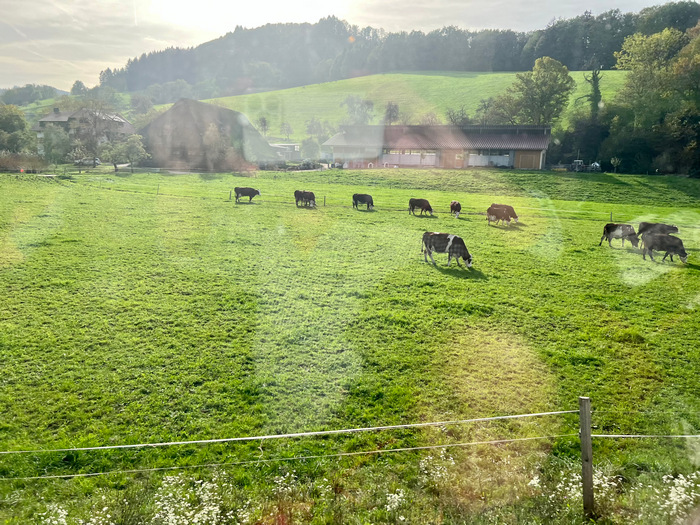
Satisfied cows seen through the bus’ window
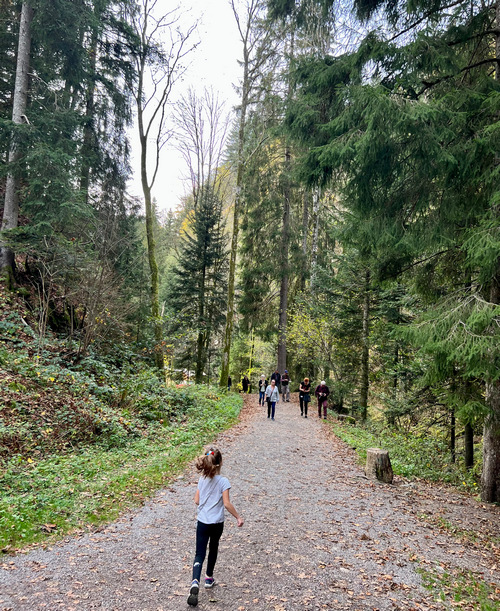
Walking a trail inside the
forest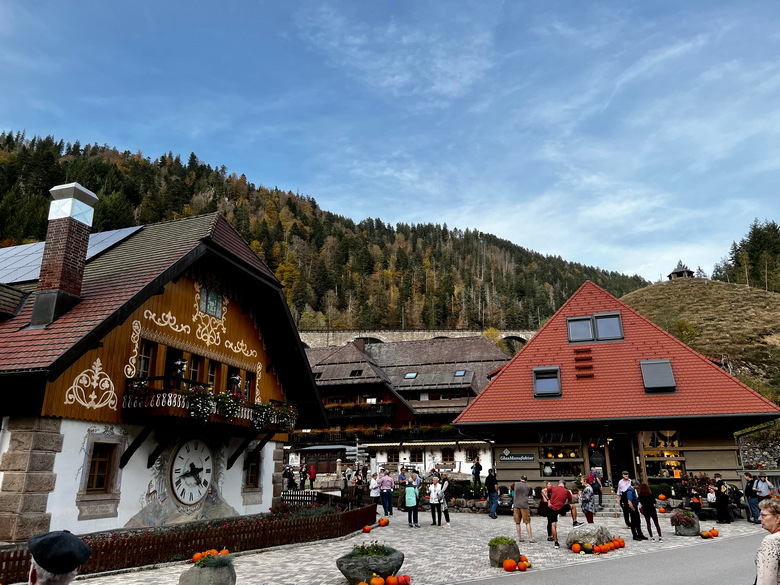
The largest cuckoo clock in the world could be found in the Black Forest. Really, it’s house-sized!
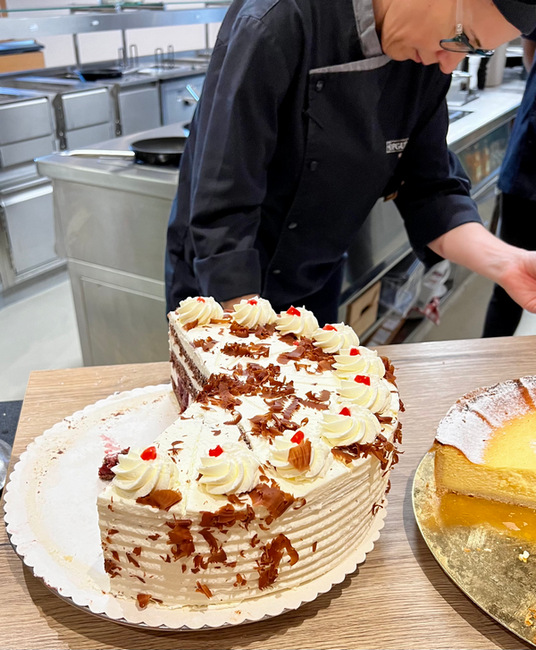
The excursion included a baking lesson for its famous Black Forest cake
which we of course had to sample.
Day 7 - Basel, Switzerland
We disembarked from the
Viking Kara this morning and somewhat sad we had to leave our home of the past 7
days. But we still had a few hours to see Basel before we took the train to
Lucerne, Switzerland. Brod Willie and Sis Aida were headed to the airport to fly
back home to Indiana.
Basel is the 3rd largest city (after Zurich &
Geneva) in Switzerland. It’s an important cultural city with a centuries-old
cathedral, many museums and a university.
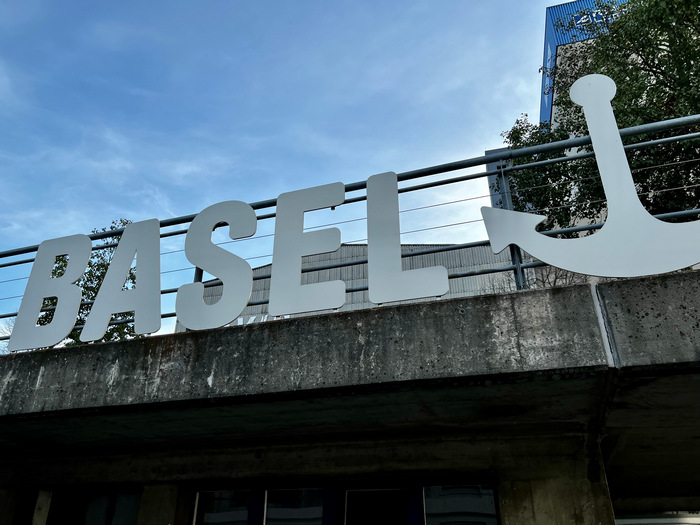
Basel welcome sign

Basel street scene
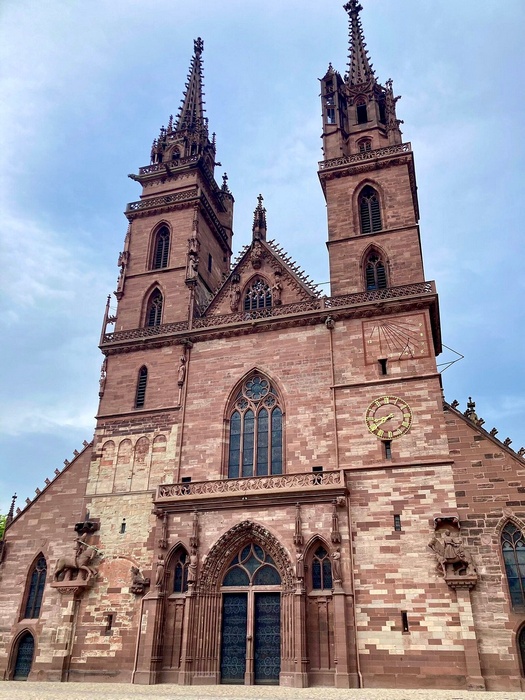
The Basel Minstrel, which began construction at the beginning of the 11th century,
stands rendered in the Romanesque-Gothic style.
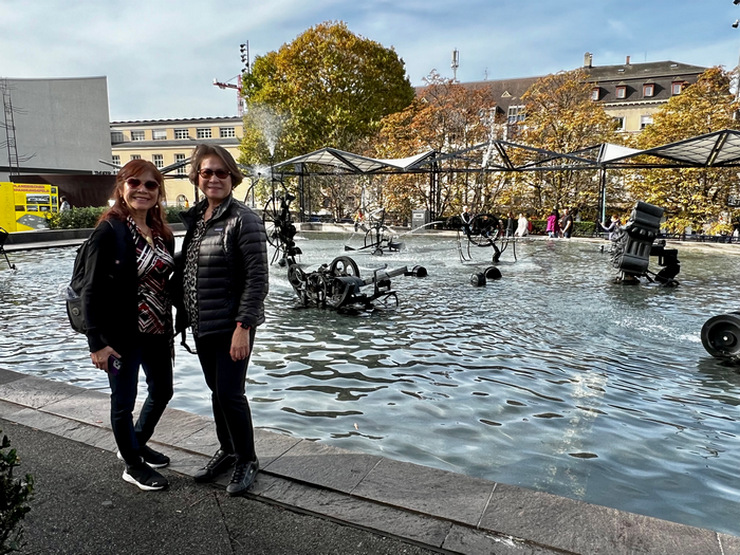
Zeny and Sis Agnes in front of the Tinguely Fountain in
downtown Basel.
The sculpted figures float and flutter on the water in this
unique fountain.
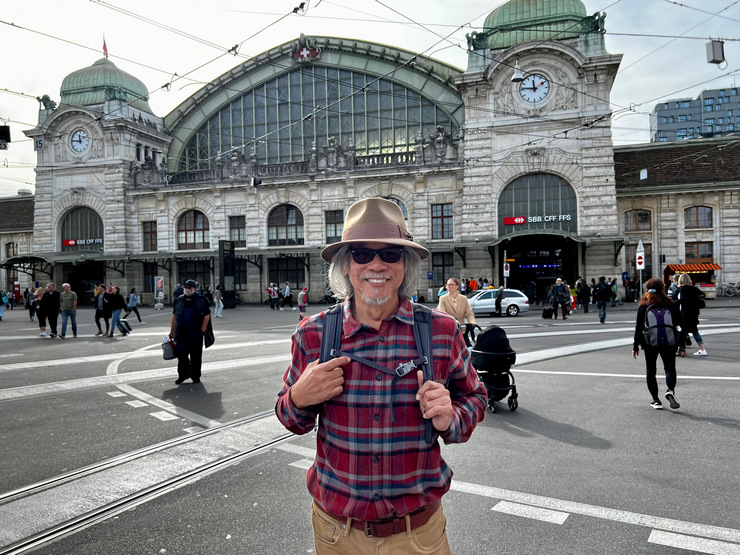
Brod Boy in front of the Basel Train Station
Remember when Brod Willie was desperately looking for a Chinese restaurant and even found one in Breisach, Germany??? Well… as we walked around Basel, and as Brod Willie and Sis Aida flew home, we found a bevy of Chinese restaurants!!! We had to let Brod Willie know.
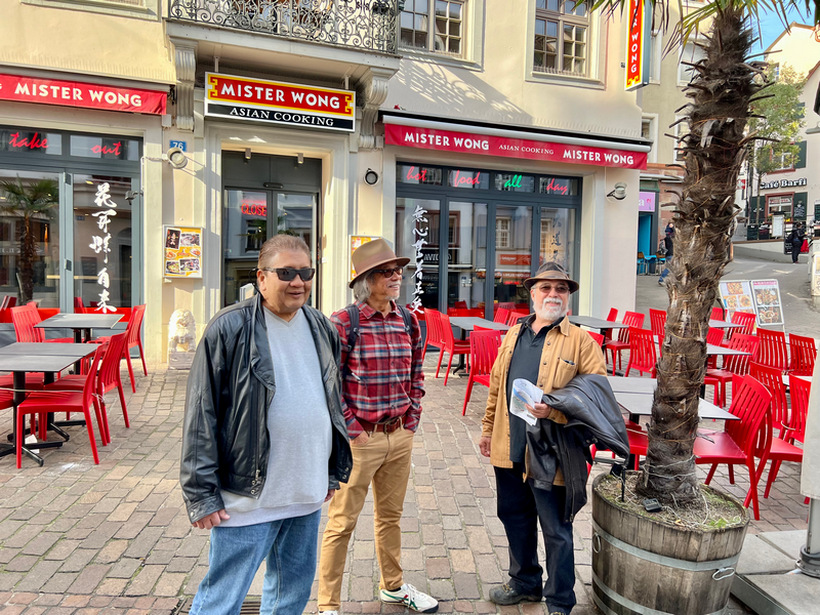

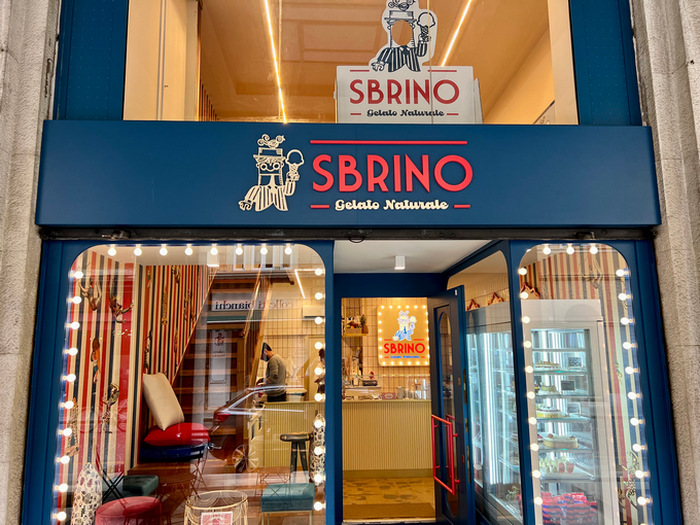
But we also kept our eye out for the occasional gelateria (all-natural only please) so we can apprise Sis Aida.
Coda
Thus ends our exciting
adventure aboard the Viking Kara. We were pampered and spoiled, blessed with
good weather, steeped in culture, giddy with laughter, seen too many churches,
had tired feet sometimes but we continued to enjoy every minute. And to do it
with beloved Betan brothers, sisters and friends… come on, what’s there to
say!!!
Some travel tips:
1. Traveling during what we call the
“shoulder season” has weather risks but can mean big savings. We got lucky with
only one real bad weather day for the whole week. And bring some sunscreen in
case you get weather-lucky.
2. River cruising is a good alternative for
travelers who do not care for huge crowds, children and long lines associated
with ocean cruising. With Viking, no one under 18-years old is allowed and
there’s all of just 170+ passengers. The experience is more personalized.
Besides, it’s a relaxed, low-effort undertaking. If you’re the half-lazy
traveler this will fit you to a “T”.
3. If you do a riverboat cruise in
the future, purchase a “spirits” package. The basic fare includes free beer and
wine, but a spirits package is affordable and allows for premium drinks. You’re
on vacation so you might as well drink premium.
4. Traveling with
check-in luggage these days can be expensive and full of hassles especially if
you have to make tricky connections. Buy some quick-drying technical clothing
that you can wash & dry and this may allow you to travel with less luggage. One
thing about a riverboat cruise, you’re staying in basically the same hotel for
days so luggage is not so much an issue while you’re there.
Thank you for
reading this chronicle and hope you enjoy your next vacation!
The
lively cast… again…

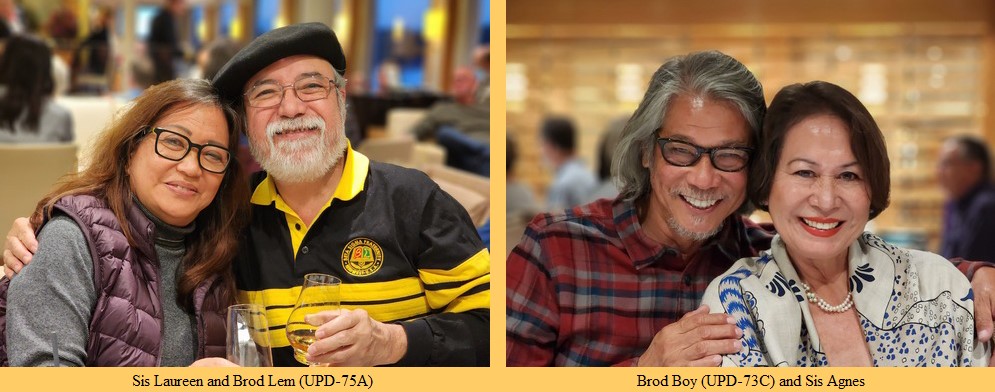
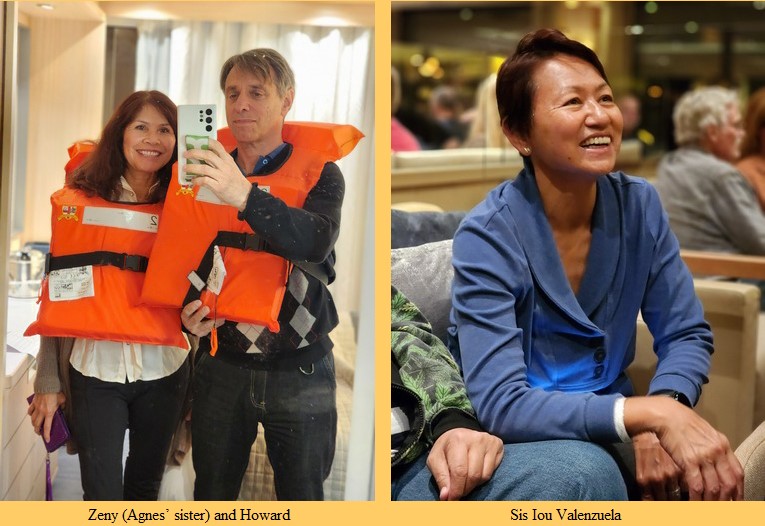
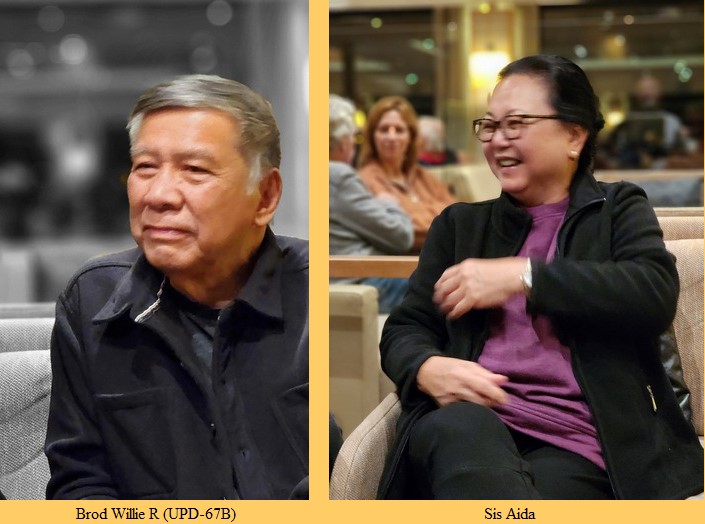
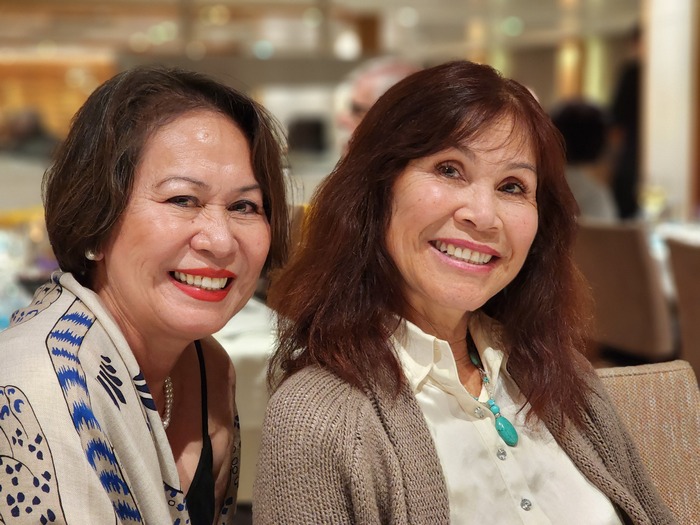
Agnes and her sister Zeny

The beautiful portraits you see above are Howard’s doing. Thanks, Howard!
